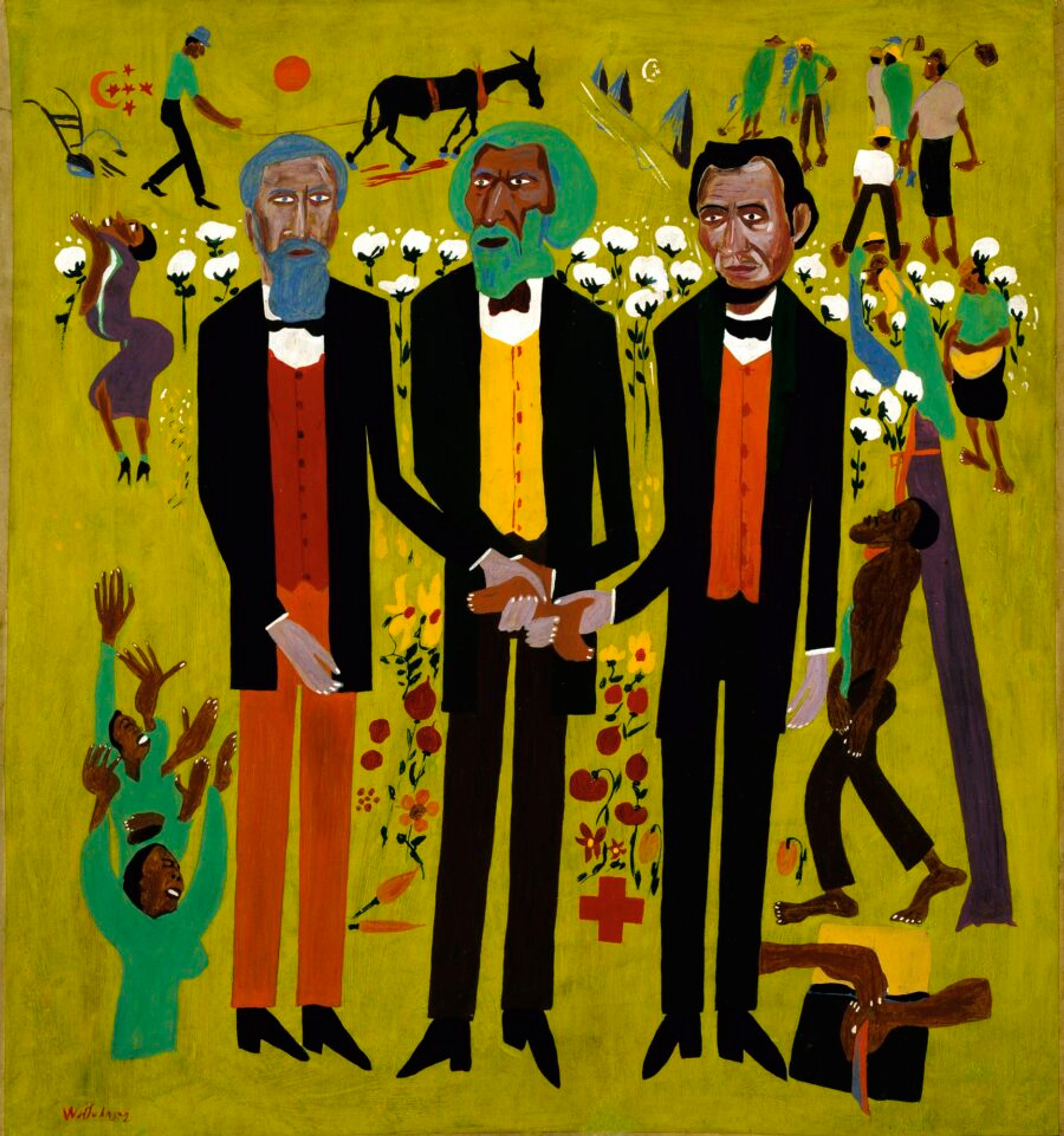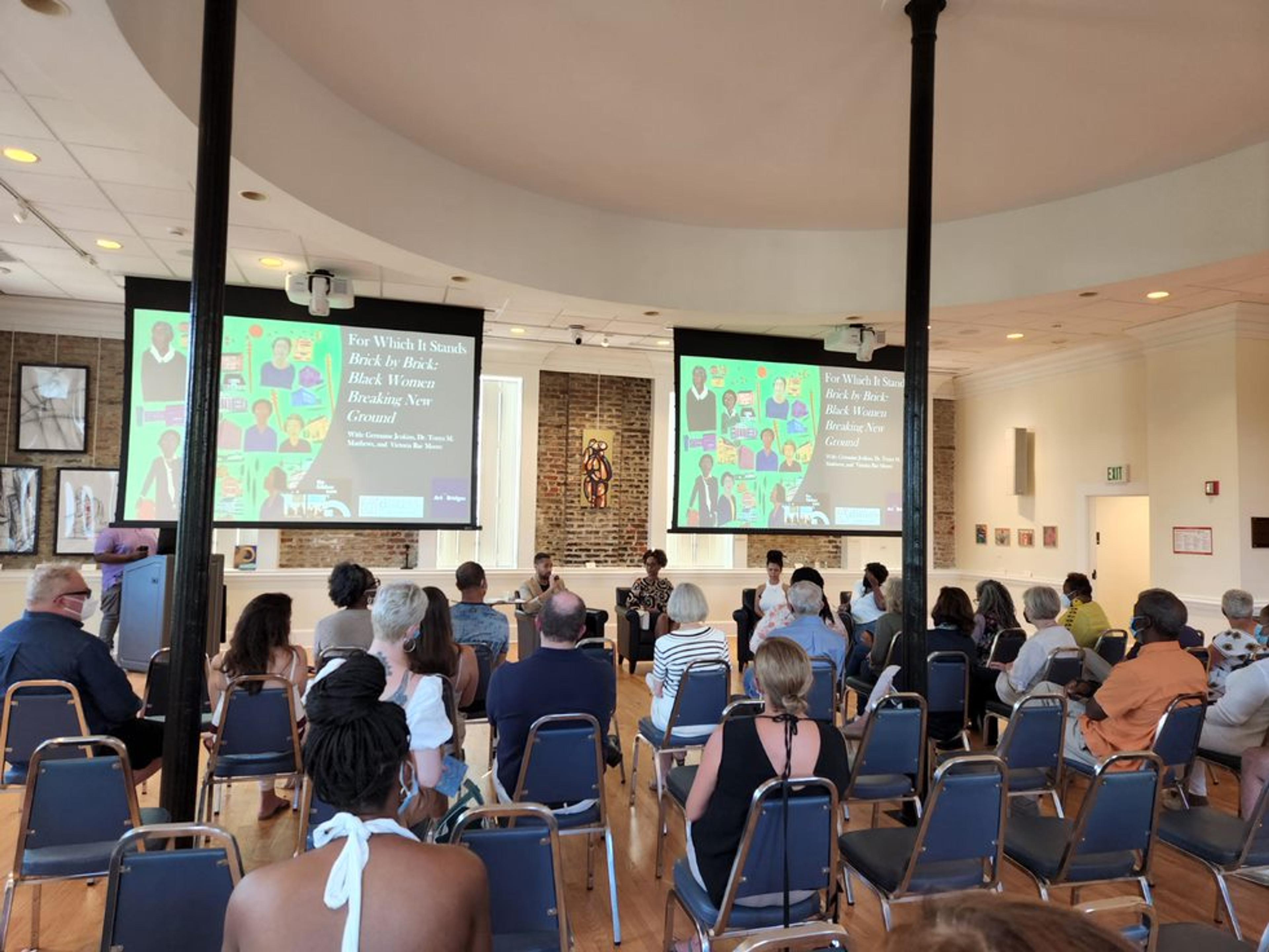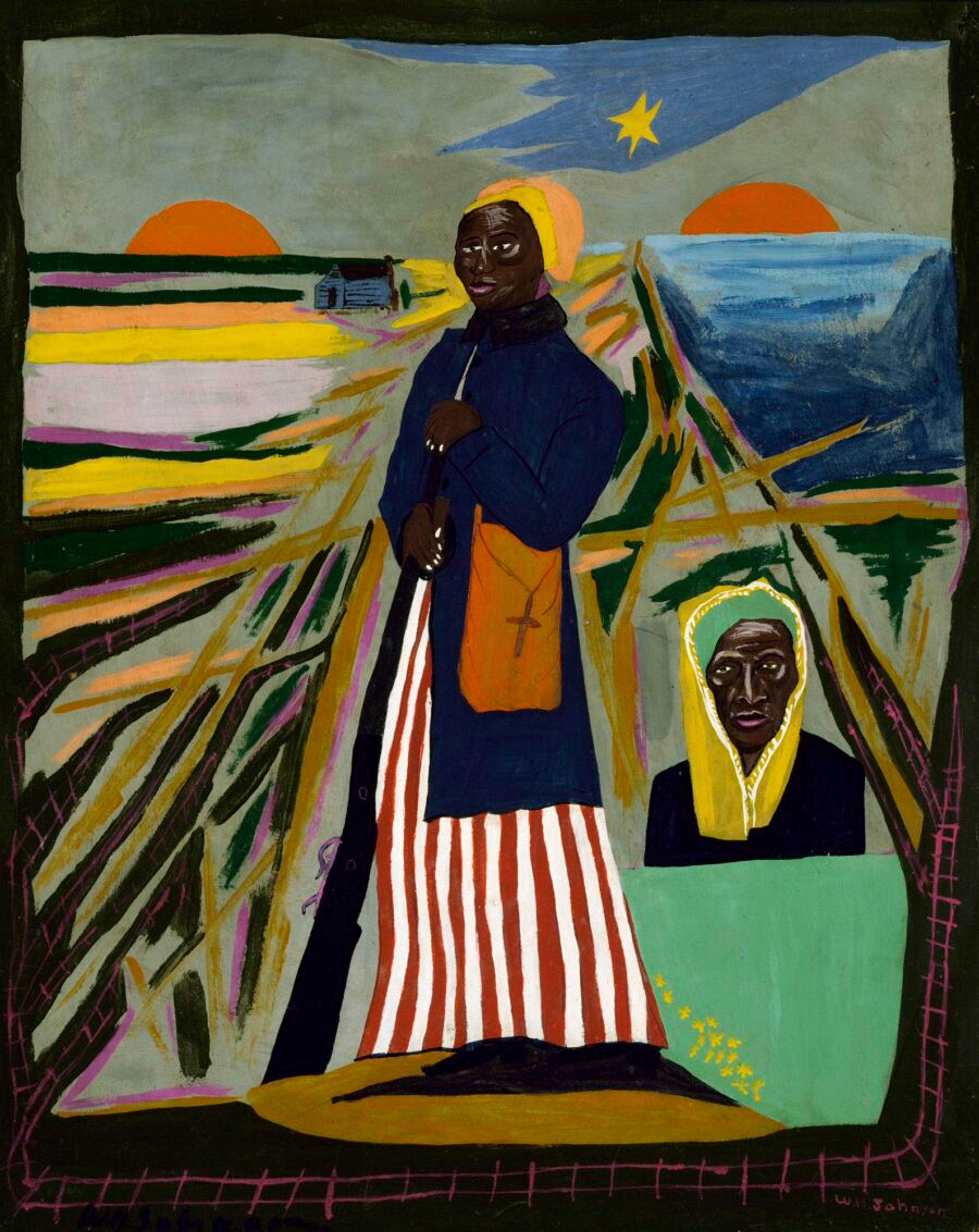
William H. Johnson, Three Great Abolitionists: A. Lincoln, F. Douglass, J. Brown, c. 1945, oil on paperboard, 37 3/8 x 34 1/4 in. Smithsonian American Art Museum. Gift of the Harmon Foundation.
Gibbes Museum of ArtPartner Story
Building new audiences through intentional partnership.
William H. Johnson sparks bold conversations and engagement

For Which It Stands panelists and moderator, from left: Dr. Tonya Matthews (President and CEO of the International African American Museum), Victoria Rae Moore (Co-founder of TINYisPOWERFUL and part of South Arts’ Emerging Leaders of Color program), Chase Quinn (arts and culture writer and panel moderator), and Germaine Jenkins (Co-Director of Intentional and Strategic Development at Fresh Future Farms).

Guest speakers and attendees of For Which It Stands: Black Women Breaking New Ground, hosted at the Avery Research Center at College of Charleston, July 2022. Courtesy of the Gibbes Museum of Art.
Fighters for Freedom: William H. Johnson Picturing Justice features 29 portraits of African American activists, scientists, and luminaries alongside international heads of state. The portraits were selected from a collection of more than 1,000 works by prolific twentieth-century painter William H. Johnson and given to the Smithsonian American Art Museum by the Harmon Foundation in 1967.
Now recognized as one of the most significant African American artists of his generation, Johnson worked in the final years of his career to celebrate the stories of freedom fighters like Harriet Tubman, George Washington Carver, and others. Only exhibited once in the United States during Johnson’s lifetime, these powerful works have traveled to museums across the country with support from Art Bridges and returned to Johnson’s home state of South Carolina in 2022 with the tour’s exhibition at the historic Gibbes Museum of Art.
The presentation of Fighters for Freedom at the Gibbes from January to August 2022 further strengthened an ongoing schedule of exhibitions and programs addressing complex and underrepresented narratives in art history.
Community members enthusiastically welcomed the opportunity to learn more about Johnson’s work and life during the exhibition, and the museum embraced the opportunity to reflect on a pivotal moment in its own history: a 1973 exhibition of Johnson’s work, the first solo show by an African American artist at the Gibbes.
Creating Community
Enthusiastically committed to “ensuring that all members of [their] community feel seen and valued in everything [they] do,” and with the help of Art Bridges’ Learning & Engagement team, the Gibbes created a project to activate Johnson’s work through an interdisciplinary suite of community-based partnerships, resources, and public programs. Among these, For Which it Stands: Brick by Brick, Black Women Breaking New Ground, used Johnson’s Fighters for Freedom series to thoughtfully examine the complex and changing notions of freedom, liberty, and justice in American society.
One participant shared, “It was a privilege to listen to and learn from the Black Women Leaders event participants in conversation with one another and the paintings of William H. Johnson. Public dialogues like this one model and normalize navigating leadership spaces using nontraditional strategies that center interconnectivity, empathy, equity, and justice.”

Young visitors to Fighters for Freedom: William H. Johnson Picturing Justice at the Gibbes Museum of Art in Charleston, SC. Courtesy of the Gibbes Museum of Art

William H. Johnson, Harriet Tubman, c. 1945, oil on paperboard, 28 7/8 x 23 3/8 in. Smithsonian American Art Museum. Gift of the Harmon Foundation.
Reaching New Audiences
Beginning in fall 2020, For Which it Stands is a series of town hall-style, of-the-moment conversations where community members come together to address timely issues in conversation with local artists and stakeholders. Hosted in its most recent iteration with the Avery Research Center at the College of Charleston, the series focused on Black women’s critical roles in historic movements for social change. William H. Johnson’s Women Builders, a painting that celebrates the contributions of Black women to the enrichment of their communities, inspire July 2022's conversation.
After months of virtual programming, this new format for For Which it Stands also marked the Gibbes' return to in-person programming and a vital opportunity for the museum to reconnect with the Charleston area community. “It’s all about leveraging and deepening relationships,” the Gibbes reported to Art Bridges at the conclusion of the exhibition. “Our biggest takeaway is the power of intentional partnerships in building audiences, and [this event] showed that the venue can make a positive difference in who we reach.”
Why We Love This Project
We love how this program demonstrates the significance of traveling exhibitions as tools for sharing the work of artists like William H. Johnson and highlighting the transformation underway at our partner museums. For the Gibbes, meeting their community in the spaces and places of trusted partners was key to moving this ongoing work forward as they—and Art Bridges—envision a museum and world where everyone has access to the power of art.

New Available Groupings
Check out new groupings available to borrow from our Partner Loan Network lenders.
View the Groupings